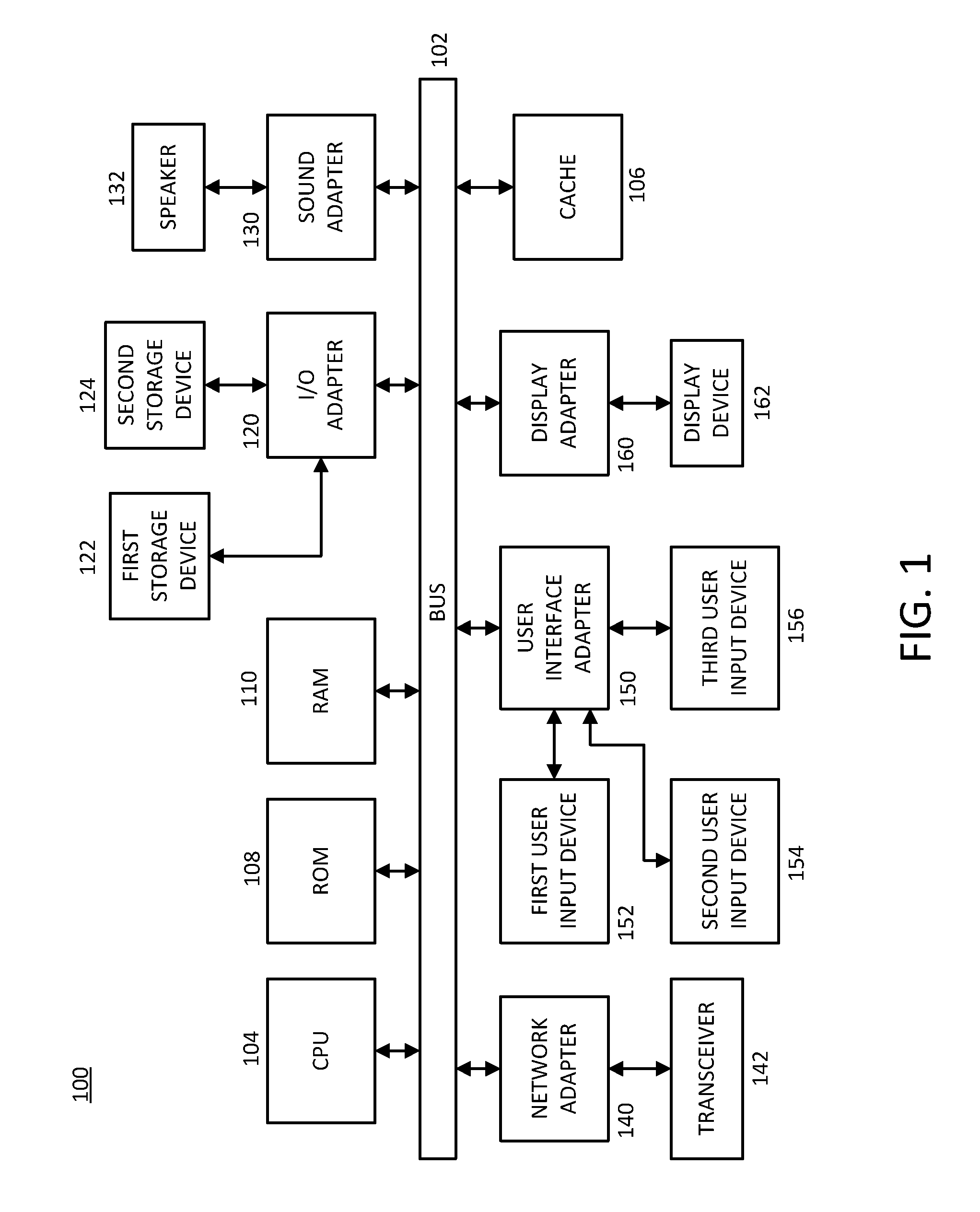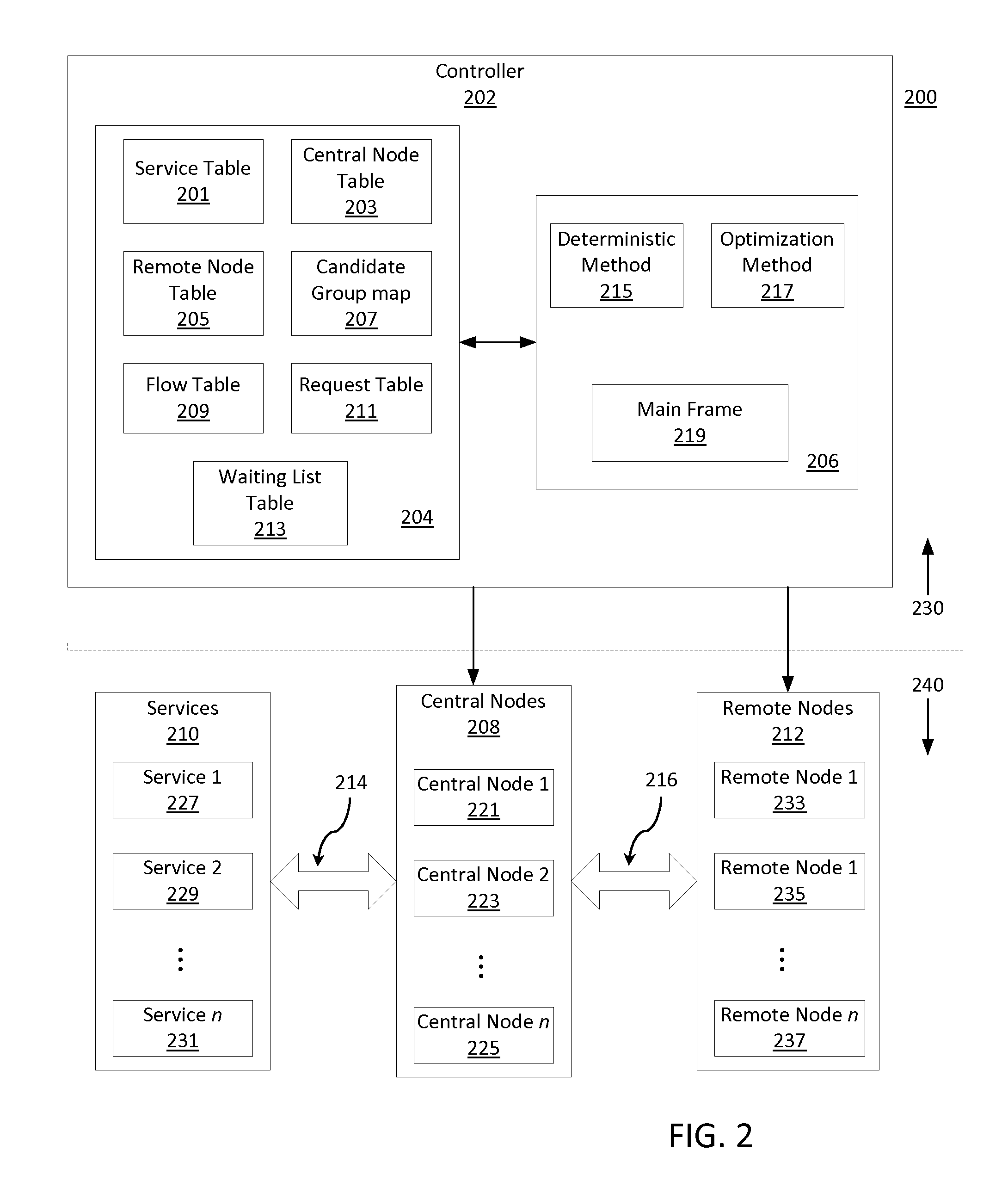Network Virtualization and Resource Allocation For the Internet of Things
a network virtualization and resource allocation technology, applied in the field of optical networks, can solve the problems of no dynamic resource allocation or optimization method, traffic prioritization, or on-demand/programmable way, and the formulating and verifying of universally effective resource allocation and optimization algorithms becomes difficul
- Summary
- Abstract
- Description
- Claims
- Application Information
AI Technical Summary
Benefits of technology
Problems solved by technology
Method used
Image
Examples
Embodiment Construction
[0022]The present principles provide a system and method for optical network virtualization to determine (e.g., abstract) physical differences in an underlying optical network topology / architecture. In a particularly useful embodiment, the underlying physical-layer connectivity may be abstracted by candidate group mapping (e.g., between remote and centralized network nodes), such that by changing the candidate group mapping, different physical-layer architectures (e.g. passive optical networks (PONs), point-to-point wavelength division multiplexing (WDM), hybrid architectures, etc.) may be treated within a single framework.
[0023]In one embodiment, for on-demand / programmable dynamic resource allocation (e.g., based on a given candidate group map), both a deterministic method and an optimization method, including one or more programmable features) may be employed according to the present principles. In both of the above methods (e.g., deterministic and optimization), examples of progr...
PUM
 Login to View More
Login to View More Abstract
Description
Claims
Application Information
 Login to View More
Login to View More - R&D
- Intellectual Property
- Life Sciences
- Materials
- Tech Scout
- Unparalleled Data Quality
- Higher Quality Content
- 60% Fewer Hallucinations
Browse by: Latest US Patents, China's latest patents, Technical Efficacy Thesaurus, Application Domain, Technology Topic, Popular Technical Reports.
© 2025 PatSnap. All rights reserved.Legal|Privacy policy|Modern Slavery Act Transparency Statement|Sitemap|About US| Contact US: help@patsnap.com



